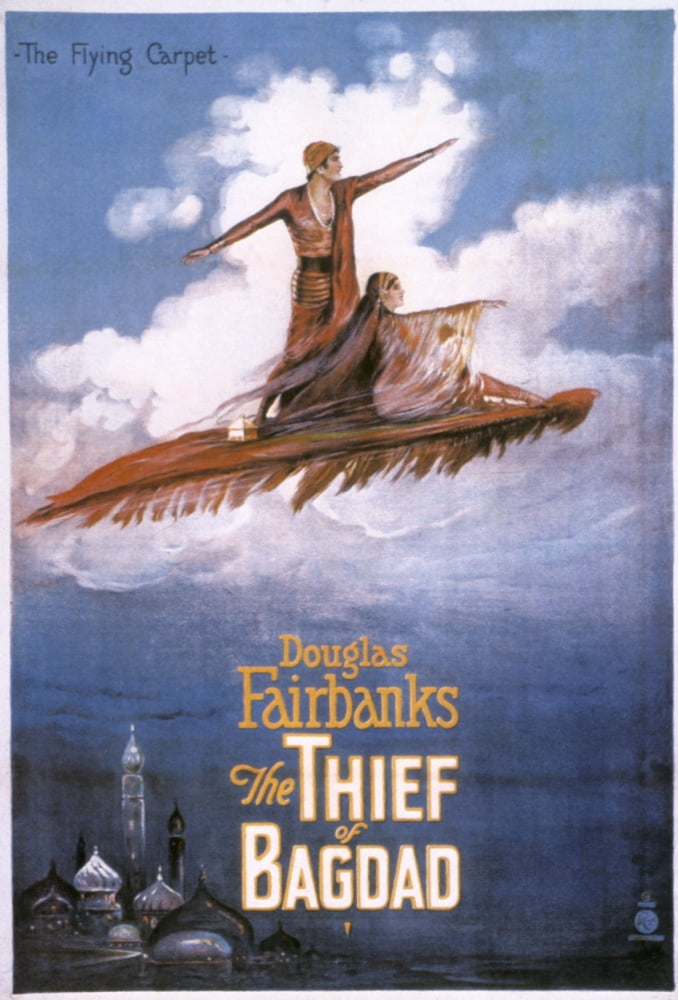

Cooke felt this was an idea gone wrong, since not even Fairbank's exuberance could breathe in such a physically overwhelming environment.
#The thief of bagdad tv#
Suitable camera angles and editing maneuvers provided finishing touches.Īccording to a book about Fairbanks by Alistair Cooke, the respected journalist and TV impresario, Fairbanks poured large amounts of money and energy into The Thief of Bagdad because he wanted to one-up historical costume pictures like Gypsy Blood (1920) and All for a Woman (1921) that Germany had been putting on the market. Walsh set up a similar crane on a soundstage and it did the trick, supplemented by an overhead pulley, a carpet with steel straps woven through it, and plenty of the thin wires on which old-style Hollywood fantasies regularly relied. In his memoir, Walsh claimed to have dreamed up the magic-carpet illusion while watching a Los Angeles construction job, where he saw a steelworker riding a load of girders being hoisted up by a crane. The special effects were especially challenging for a director whose pictures had usually dealt with the more or less real world.
#The thief of bagdad movie#
True to its gigantic scale, the movie doesn't boast many close-ups, preferring wide shots that show off the walls, towers, stairways, minarets, and other vertical things that Fairbanks scales, climbs, clambers up, and scampers over in scene after high-spirited scene. The Thief of Bagdad was the first Hollywood picture to cost more than a million dollars, according to Walsh, who filmed it in an efficient thirty-five days. He quickly accepted the job, though, happy to work with Fairbanks, whom he considered "the perfect hero." He also appreciated the lavish production values of the project, with sets created by the great William Cameron Menzies and costumes by Mitchell Leisen, later to become a prolific director himself. He was surprised when Fairbanks asked him to supervise such an exotic entertainment, since most of the pictures he had directed at that point in his career "dealt with cowboys and gangsters and pimps and prostitutes and the dregs of the American West," as he later wrote in his autobiography. The Thief of Bagdad was directed by Raoul Walsh, still fairly young but already a seasoned Hollywood hand. Griffith and Charles Chaplin, added even more to his status as a foremost figure not only in the motion-picture industry but in American culture at large. His marriage to Mary Pickford, known worldwide as America's Sweetheart, and their partnership in the United Artists studio, which they founded in 1919 along with D.W. Equally important, he was a sophisticated Hollywood player, fully involved in his projects from the planning stages through the world premieres.
_02.jpg)
He was also a gifted comedian, and as critics have noted, his knockabout adventure pictures were often parodies of knockabout adventure pictures, made all the more enjoyable by Fairbanks's willingness to poke irreverent fun at his own screen image. He was a top-flight gymnast who virtually never used a stunt double. It's a good thing someone played by Fairbanks is around to save the day, dodging all sorts of dangers like a human-hating monkey, a giant underwater spider and more along the way.įairbanks was more than a handsome star with a knack for choosing sleek, effective vehicles.

The story's main gimmick is a standard fairy-tale situation: the beautiful princess will marry the man who proves himself the bravest and cleverest, but a tubby little prince has somehow gotten into the running, and an even darker threat comes from a sinister Mongol who will stop at nothing to win. The eponymous hero is the kind of devil-may-care rascal who watches a fellow thief get flogged for stealing a jewel, and then immediately steals a jewel to show how unflappable he is. The plot is episodic, geared more to flamboyant escapades than to narrative logic. This said, the freewheeling Arabian Nights adaptation has lots of atmospheric charm and silent-movie spectacle, and looking for hidden wires in rope-trick, flying-horse, and magic-carpet scenes is a good part of the fun. Douglas Fairbanks has been called the first celebrity, which is probably correct, and his 1924 epic The Thief of Bagdad: An Arabian Nights Fantasy holds a special place in his sizable body of work - not because it was his best picture, but because it capped a phase in his career so grandly and excessively that afterward he looked for less humongous productions that better suited both his talent and his audience.


 0 kommentar(er)
0 kommentar(er)
